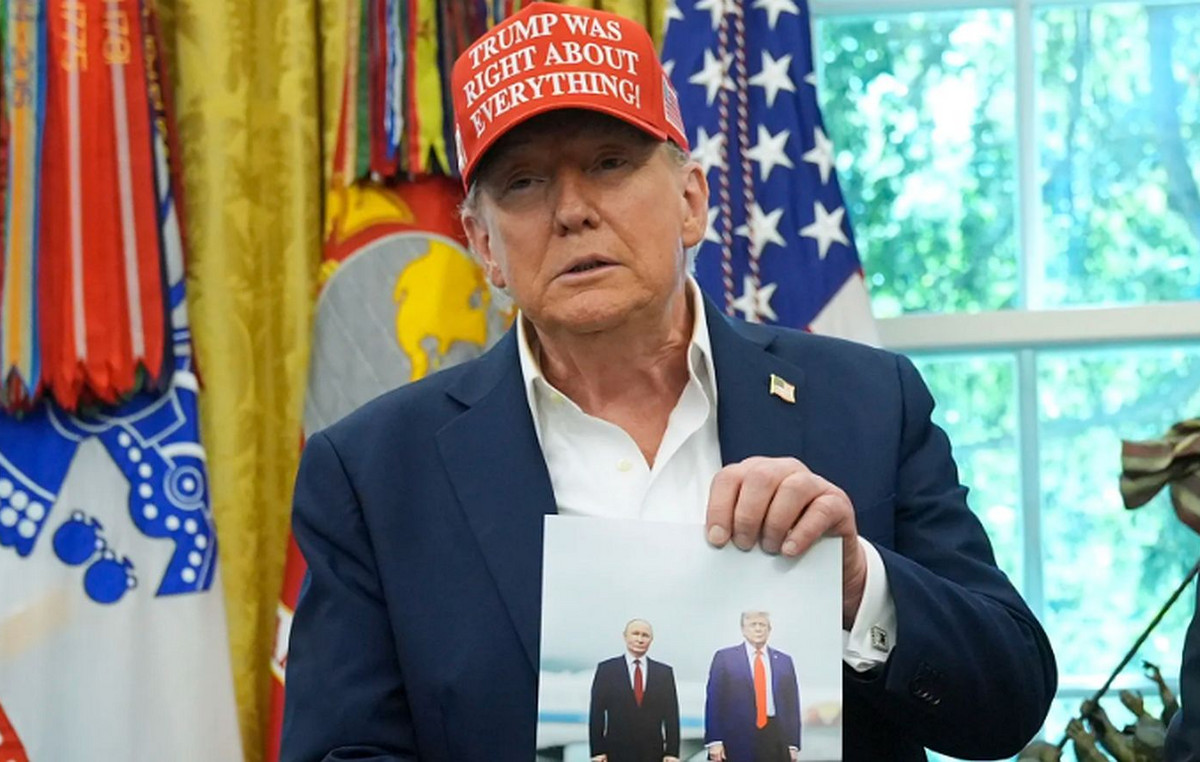- The US dollar index can be seen while operators adopt caution in mixed signals of Fed officials.
- Austan Goolsbee rejects the notion that Fed should reduce interest rates to reduce the cost of government debt.
- Trump announced a tariff rate of 35% for the imported goods of Canada.
The index of Dollar American (DXY), which measures the value of the US dollar (USD) compared to six main currencies, continues to gain ground for the third consecutive session and is quoted around 97.80 during the first European hours on Friday. The operators remain cautious in response to mixed comments of the Federal Reserve officials.
The president of the Bank of the Federal Reserve of Chicago, Austan Goolsbee, said at the last minute of Thursday that he does not support the arguments that the US Central Bank should cut rates to make the cheapest government debt, the mandate is in jobs and prices. Goolsbee stressed that economic data were solid before the liberation day tariffs of April 2.
However, the member of the Board of Governors of the Fed, Christopher Waller, reiterated why the Central Bank should make an early feat in July. Waller also pointed out that the inflationary effects of tariffs will probably be of short duration and stipulated that a rate cut here would not be politically motivated.
In addition, the president of the Bank of the Federal Reserve of San Francisco, Mary Daly, supported Waller’s comments mentioning that monetary policy remains restrictive. The economy remains in a solid base, with constant growth, strong work profits and decreased inflation. Given these conditions, the Federal Reserve It is well positioned to restore pricing stability in a gradual and measure, Daly added.
However, the feeling of the market is still cautious after the US president, Donald Trump, announced a 35% tariff on the imported goods of Canada, after a wave of letters of demand for tariffs sent to multiple countries on Wednesday, which will enter into force on August 1. Trump also indicated that the European Union (EU) would receive a similar warning that details new tariff rates “today or tomorrow”.
The minutes of the Federal Open Market Committee (FOMC) of the June 17-18 meeting, published on Wednesday, indicated that those responsible for the policy largely maintained a waiting position and see regarding future decisions about interest rates.
US Dollar – Frequently Questions
The US dollar (USD) is the official currency of the United States of America, and the “de facto” currency of a significant number of other countries where it is in circulation along with local tickets. According to data from 2022, it is the most negotiated currency in the world, with more than 88% of all global currency change operations, which is equivalent to an average of 6.6 billion dollars in daily transactions. After World War II, the USD took over the pound sterling as a world reserve currency.
The most important individual factor that influences the value of the US dollar is monetary policy, which is determined by the Federal Reserve (FED). The Fed has two mandates: to achieve price stability (control inflation) and promote full employment. Its main tool to achieve these two objectives is to adjust interest rates. When prices rise too quickly and inflation exceeds the 2% objective set by the Fed, it rises the types, which favors the price of the dollar. When inflation falls below 2% or the unemployment rate is too high, the Fed can lower interest rates, which weighs on the dollar.
In extreme situations, the Federal Reserve can also print more dollars and promulgate quantitative flexibility (QE). The QE is the process by which the Fed substantially increases the flow of credit in a stuck financial system. It is an unconventional policy measure that is used when the credit has been exhausted because banks do not lend each other (for fear of the default of the counterparts). It is the last resort when it is unlikely that a simple decrease in interest rates will achieve the necessary result. It was the weapon chosen by the Fed to combat the contraction of the credit that occurred during the great financial crisis of 2008. It is that the Fed prints more dollars and uses them to buy bonds of the US government, mainly of financial institutions. Which usually leads to a weakening of the US dollar.
The quantitative hardening (QT) is the reverse process for which the Federal Reserve stops buying bonds from financial institutions and does not reinvote the capital of the wallet values that overcome in new purchases. It is usually positive for the US dollar.
Source: Fx Street
I am Joshua Winder, a senior-level journalist and editor at World Stock Market. I specialize in covering news related to the stock market and economic trends. With more than 8 years of experience in this field, I have become an expert in financial reporting.







